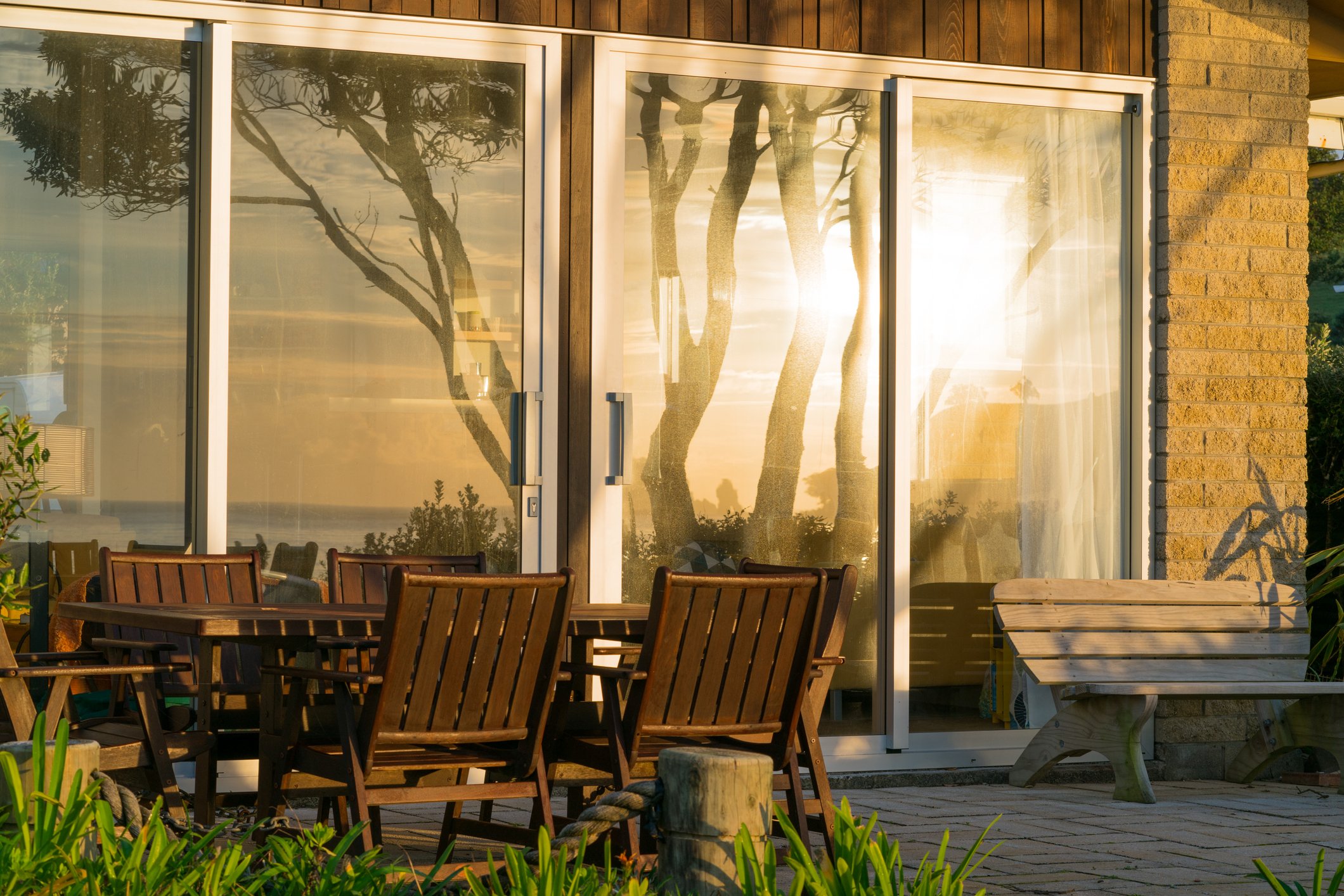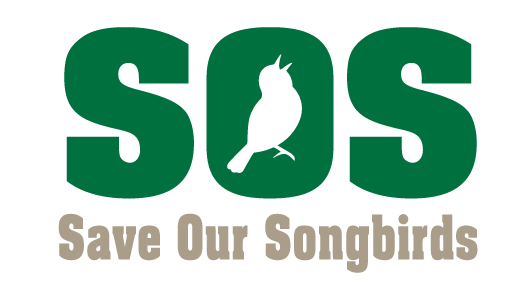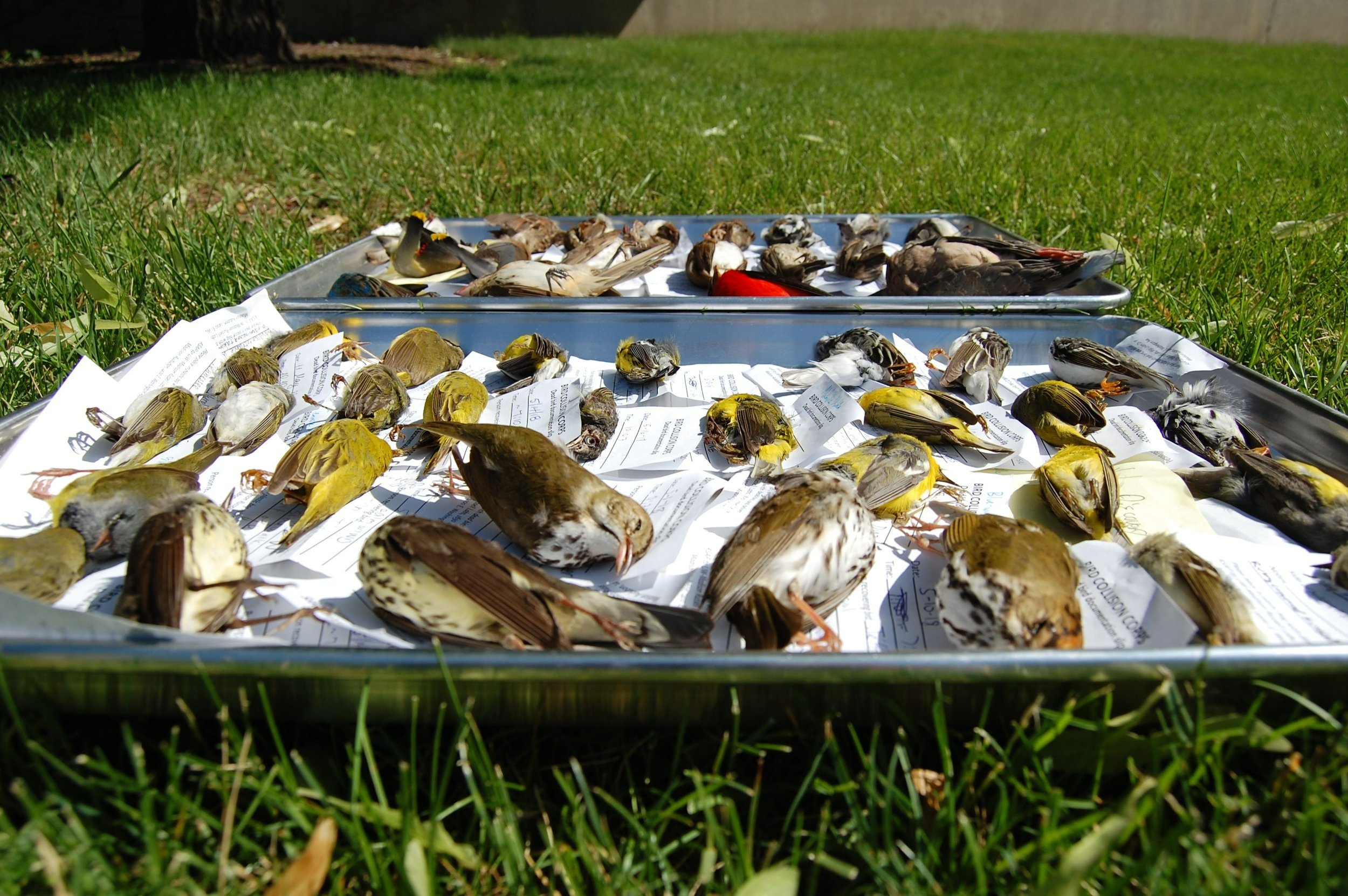
Reduce Window Threats
Some home windows can be deadly for birds because glass is invisible to them. New research in 2024 shows 3.5 BILLION birds are killed every year in the U.S. after flying into glass, far more than the roughly 1 billion previously thought. Nearly half of these fatalities occur at our homes. Reflections of trees, plants and sky — or such habitat seen through a window on the other side — can be a problem.
The good news is that typically only a few windows in our home are problems for birds. Try fixing one window — where you’ve heard birds hit before or windows next to feeders or bird baths. Find inexpensive and effective options below, and see a listing from Southern Wisconsin Bird Alliance of companies in southern Wisconsin that install window treatments.
Easy options for making windows safer for birds
Add an external insect screen or bird screen
Tests by researchers have shown that installing ordinary removable insect screens on the outside of the window is effective in preventing bird collisions. Full-window screens are best, according to the American Bird Conservancy Glass Collision Program.
Apply a commercial film or markers to outside of windows
Visible patterns applied to the outside of windows following spacing guidelines can prevent collisions and be effective and unobtrusive. We’ve heard good things about Feather Friendly, Bird Divert and ABC BirdTape and all three have been tested and proven effective by the American Bird Conservancy’s Glass Collision Program.
Get 10% off all Feather Friendly and other products featured on this web page in May except for the gift cards and Bird Divert UV options from April 22-May 31, 2025. Enter the discount code “SOSBirds2025” at check out.
Hang an Acopian BirdSavers curtain on the outside of windows
If you don’t want to apply something directly on the outside of your window, try installing a curtain of parachute cord to hang on the outside of it. These Acopian BirdSavers, also known as “zen wind curtains” are easy, long-lasting, and very effective.
Order a BirdSaver customized to your window, or use their DIY instructions to make your own.
Get 15% off customized Acopian BirdSavers, aka “Zen Wind Curtains” in May. Enter the Coupon code "SOS-Wisconsin15" at check out.
Apply decals or use non-toxic Tempura paint or oil-based markers to add lines or other designs to the outside of windows, following guidelines from American Bird Conservancy’s Glass Collision Program :
Space lines or dots 2 inches apart so hummingbirds and other very small birds don’t try to maneuver through. Lines should be at least 1/8 inch thick, dots 1/4-inch in diameter.
Use decals that are at least 1/4 inch in diameter and spaced 2 to 4 inches apart.
If the window reflections are dark, make the lines, patterns or decals light-colored. For glass railings outside or if the window is reflecting sky, dark colors are best.
Try these DIY decals with instructions and printable bird decal stencils from New York Audubon: https://ny.audubon.org/conservation/how-create-window-decals-prevent-bird-collisions
Paint decorations or place decals on outside of windows
How to handle hard-to-reach windows
Local contractors or window washers may be able to help add treatments to windows you can’t reach from the ground. Southern Wisconsin Bird Alliance has compiled a list of companies in southern Wisconsin that they’ve confirmed apply some of the treatments described on this webpage.
Another option: The Home Depot provides access to independent licensed, insured contractors.
Doing something is better than doing nothing. If you can’t put a treatment on the outside, turn window blinds at an angle so it creates a bar for birds to see. These might be hidden by reflections and not work, but it could make a difference. Or, add decals or some other solution to the inside of the problem window, following spacing, thickness and color recommendations above.
Shield lights and turn them off at night during migration
Lights from our homes can pose a problem for migrating birds at night. The lights contribute to a “glow” that may signal to birds its time to stop and take a rest when it’s better for them to travel on to more rural areas where there’s a lower density of windows, cars, cats and other threats.
Shield lights or direct the light down, and turn off nonessential lights from 11 p.m. until 6 a.m. during spring and fall migration will help birds survive and reach nesting sites. Learn more.
Want to get involved in more bird-collision prevention efforts?
Several Wisconsin organizations work on a broader scale and with bigger buildings to reduce bird collisions. Learn more about these efforts and volunteer!
Southern Wisconsin Bird Alliance’s Bird Collision Corps volunteers conduct weekly surveys for dead or stunned birds around their assigned buildings during spring and fall migrations. Learn more and volunteer.
Aldo Leopold Audubon’s Safe Passage program with the city of Stevens Point enlists businesses in taking actions during peak migration periods to prevent bird collisions with their buildings.
Wisconsin Humane Society’s Night Guardians for Songbirds recruits volunteers to patrol parts of downtown Milwaukee in early morning during peak migration to collect and rescue injured or dead songbirds.
Photo caption: Songbirds killed after colliding with buildings in Madison monitored during migration by Madison Audubon’s Bird Collision Corps. Credit: Madison Audubon





